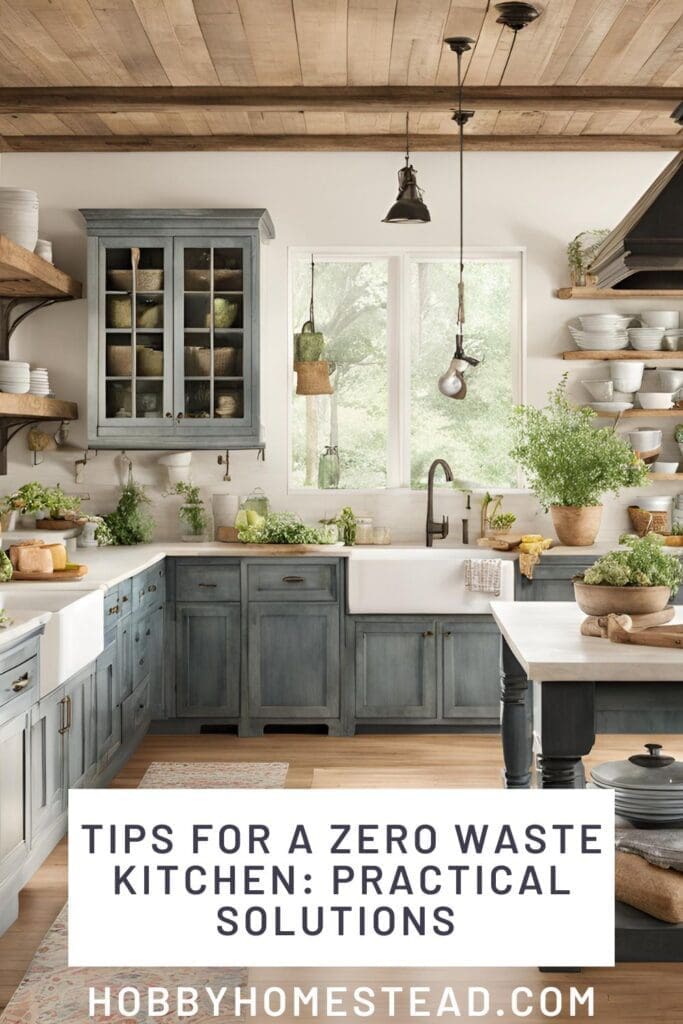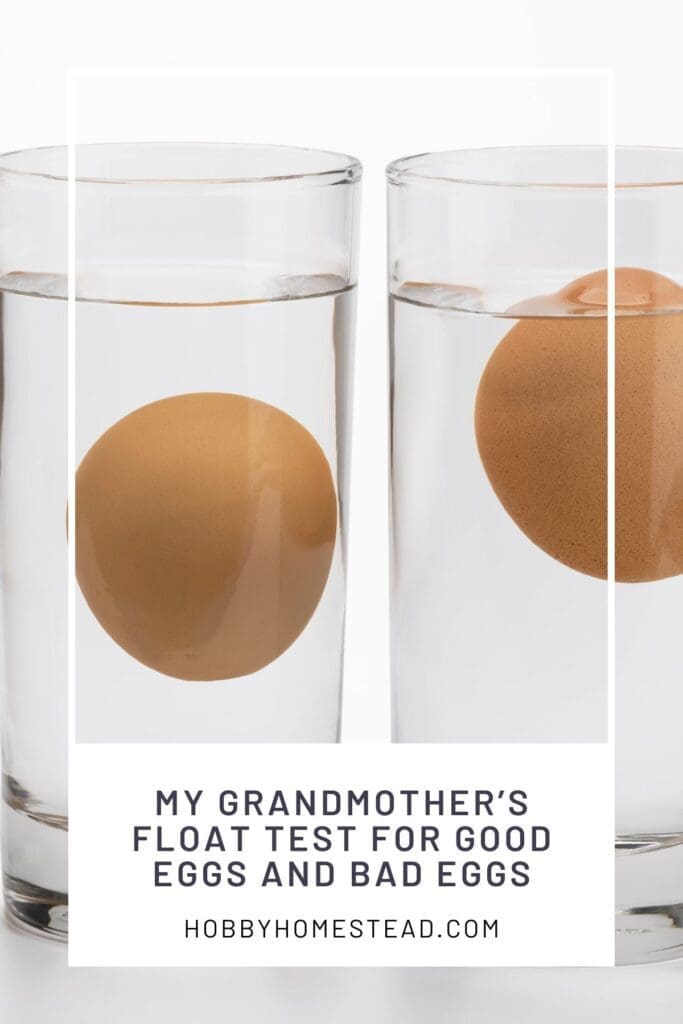Let’s talk about safe canning at home. Few things on a homestead are more satisfying than preserving your own food straight from the garden. But whether you’re a seasoned homesteader or just starting out, it’s crucial to know which canning method to use. Choosing the wrong method can risk harmful bacteria, including Clostridium botulinum, which causes botulism.
This guide will walk you through the basics of water bath canning and pressure canning, explain when to use added acids, and cover everything you need to safely preserve your jars of food.
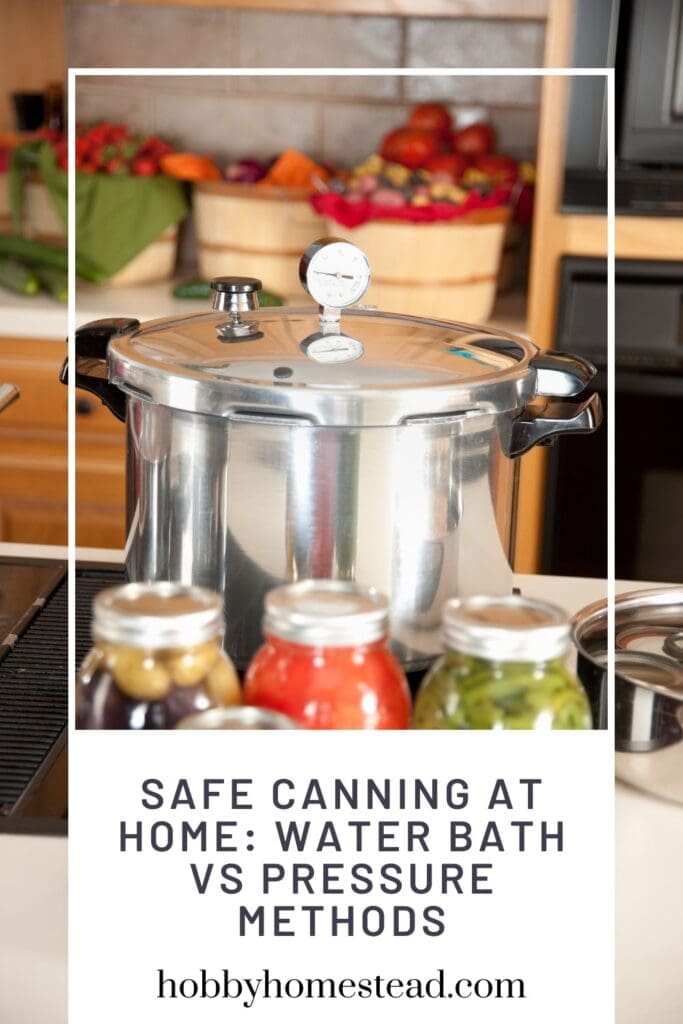
What is Water Bath Canning?
Water bath canning, also called hot water canning, is a food preservation method for high-acid foods. It involves placing glass jars filled with food in a large pot of boiling water bath, making sure the water covers the jars by at least one inch.
The heat of the processing destroys most harmful bacteria, and as the jars cool, they form an airtight seal.
High-acid foods safe for water bath canning include:
- Fruits like berries, apples, and peaches
- Tomato products with added lemon juice or citric acid
- Vinegary pickles and sweet preserves like jams or fruit butters
Tips:
- Always use tested canning recipes and follow processing times.
- Remove air bubbles before sealing jars.
- Check the airtight seal after cooling.
What is Pressure Canning?
Pressure canning is the only safe method for low-acid foods, which includes most vegetables, meats, poultry, and vegetable soup stocks.
Unlike water bath canning, a pressure canner (or pressure cooker) uses steam pressure to reach higher temperatures, enough to destroy botulism spores.
Low-acid foods, also called alkaline foods, cannot safely be water bath canned, even if boiled for a long time.
Tips for pressure canning:
- Follow pounds of pressure and processing times in tested canning recipes.
- Hot pack foods to help maintain texture.
Note: Pressure canning can make some vegetables softer, but this is a safety-first tradeoff. Sturdy vegetables, meats, and poultry still hold up well.
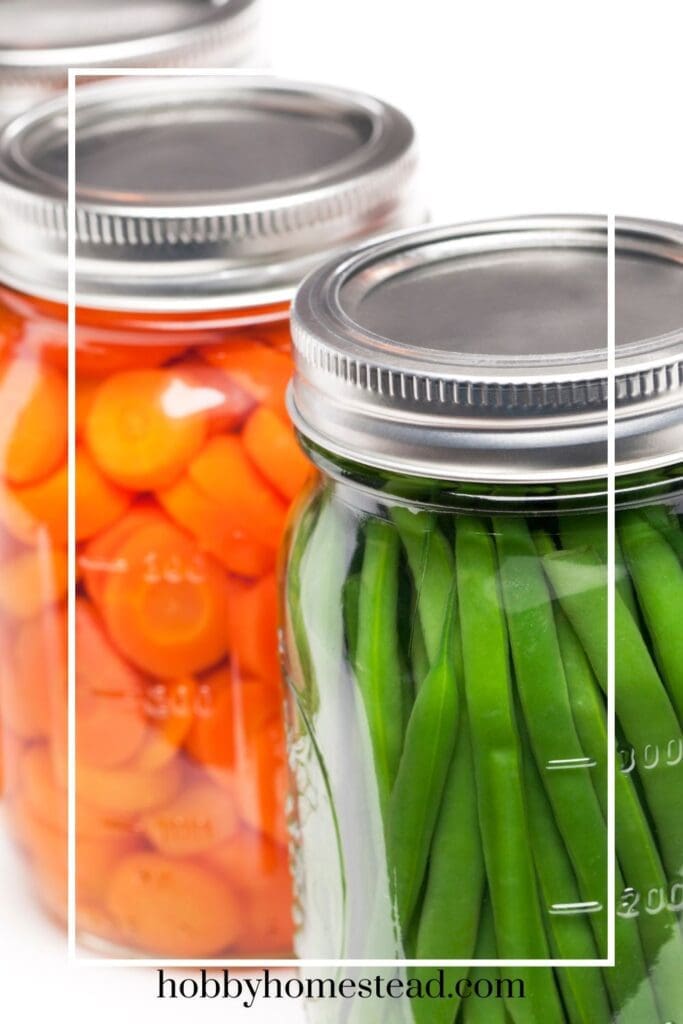
Why Acid Matters
Some foods aren’t naturally acidic enough for water bath canning. Adding acid helps ensure the pH of the ingredients is low enough to kill harmful bacteria.
- Lemon juice: 1 tbsp per pint, 2 tbsp per quart
- Citric acid: measured per recipe
- Vinegar: for pickled foods
Basic rule. Foods with a pH above 4.6 are low-acid and require pressure canning. Even tomatoes often need added lemon juice or citric acid to be safe for water bath canning.
Water Bath Canning 💧
- Fill your large pot with enough water to cover the jars by at least 1–2 inches above the tops of the jars.
- The water level must stay above the jars during the entire boiling water bath process, so check and add boiling water if needed.
- Using less water risks under-processing, which can compromise food safety.
Pressure Canning ⚡
- Add 2–3 inches of water to the bottom of the pressure canner (check your manufacturer’s instructions. Some recommend 1–2 inches for modern canners).
- You do not submerge the jars in water; the water produces steam that builds pressure inside the canner.
- Never fill the canner with too little water. Steam must form to reach the higher temperatures needed to kill botulism spores.
- Never fill with too much water. Water touching jar lids can cause jars to crack.
Quick Reference: Water Bath vs Pressure Canning
| Type of Food | Acid Level | Safe Canning Method | Notes / Tips |
| Fruits | High-acid | Water Bath Canning | Add lemon juice if needed; follow canning recipes. |
| Tomato Products | High-acid with added acid | Water Bath Canning | Boost acidity with citric acid or lemon juice. |
| Pickles & Vinegary Foods | High-acid | Water Bath Canning | Sweet preserves like jams also fit here. |
| Green Beans | Low-acid | Pressure Canning | Requires pounds of pressure; follow pressure canner instructions. |
| Vegetable Soup Stocks | Low-acid | Pressure Canning | Must reach higher temperatures to destroy botulism spores. |
| Red Meats / Poultry | Low-acid | Pressure Canning | Use hot pack and airtight seals. |
| Low-Acid Vegetables | Low-acid | Pressure Canning | Cannot safely use water bath method. |
Safety Tips for Home Canning
- Always use tested canning recipes from sources like the National Center for Home Food Preservation.
- Use the right special canning lids and ensure a proper vacuum seal.
- Store jars at room temperature.
- Don’t guess. Too little acid in water bath canning or skipping pressure canning for low-acid foods is unsafe.
Canning at Home
Canning on the homestead takes time and care, but it’s one of the best ways to enjoy your own food all year round. Knowing when to water bath can and when to pressure can keeps your jars of food safe, tasty, and ready for family meals, gifts, or long-term storage.
With the right special equipment, careful attention to processing times, and a little hard work, you’ll preserve your homestead bounty with confidence.
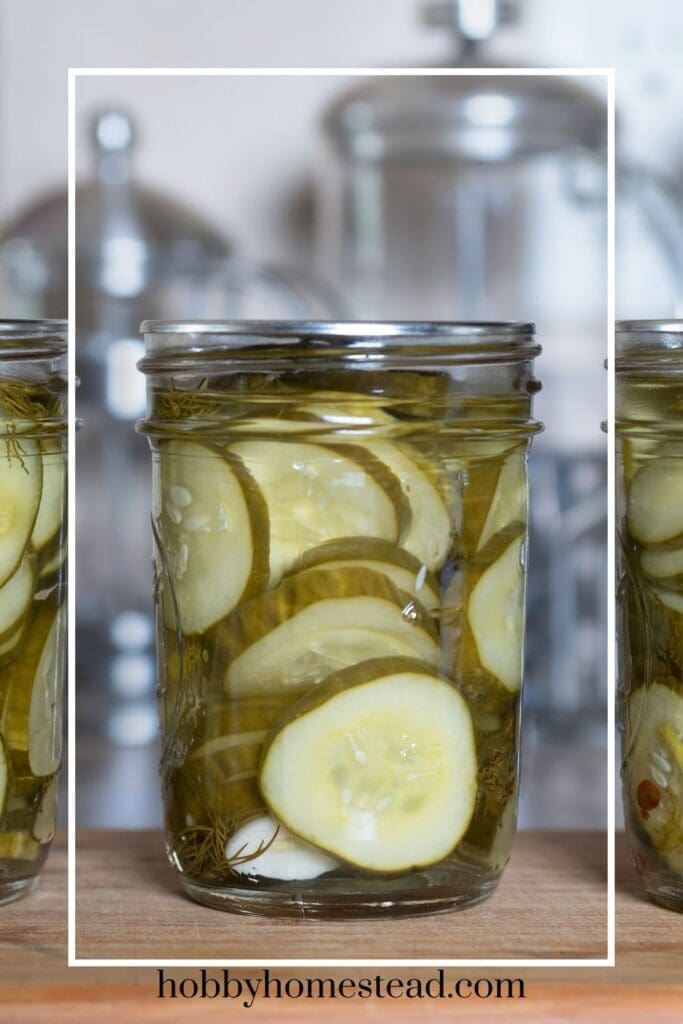
Homesteader’s Canning Cheat Sheet
Water Bath Canning ✅
Use for: High-acid foods
- Fruits (berries, apples, peaches)
- Tomato products with added acid
- Sweet preserves & jams
- Vinegary pickles
Method:
- Place jars in boiling water bath (at least 1 inch above jars)
- Follow processing times
- Remove air bubbles & ensure airtight seal
Tips:
- Add lemon juice or citric acid if needed
- Works best for high-acid foods only
Pressure Canning ✅
Use for: Low-acid foods
- Vegetables (green beans, carrots)
- Vegetable soup stocks
- Red meats & poultry
- Low-acid or alkaline foods (pH > 4.6)
Method:
- Use pressure canner or pressure cooker
- Reach higher temperatures to kill botulism spores
- Follow pounds of pressure and processing times
- Use hot pack for best texture
Tips:
- May make veggies softer—this is normal
- Only safe method for low-acid foods
Adding Acid for Safety 🍋
- Lemon juice: 1 tbsp per pint, 2 tbsp per quart
- Citric acid: measured per recipe
- Vinegar: for pickled foods
Rule: If pH > 4.6 → use pressure canning
Quick Reference Table
| Food | Acid Level | Method | Notes |
| Fruits | High | Water Bath | Add lemon juice if needed |
| Tomato products | High w/ added acid | Water Bath | Ensure proper acidity |
| Pickles & jams | High | Water Bath | Sweet preserves safe |
| Green Beans | Low | Pressure | Follow pressure guidelines |
| Soup Stocks | Low | Pressure | High heat kills spores |
| Meats/Poultry | Low | Pressure | Use hot pack, airtight seal |
| Low-acid veggies | Low | Pressure | Cannot water bath safely |
Water Bath vs Pressure Canning: Detailed Food List
| Category | Water Bath / Steam Canner | Pressure Canner |
| Definition | High-acid foods (pH ≤ 4.6) can safely be heat processed in boiling water (hot water bath or steam canner). Reaches 212°F, enough to kill molds & yeasts. | Low-acid foods (pH > 4.6) require pressure canning, which heats food to 240°F or higher to kill bacterial spores including Clostridium botulinum. |
| Examples of Foods | Apples, Apricots, Blackberries, Blueberries, Cherries, Gooseberries, Lemons, Peaches, Pears, Plums, Raspberries, Sauerkraut*, Sour Cherries, Strawberries, Tomatoes**, Pickles, Fruit Butters, Jam & Jelly, Sweet Preserves, Vinegary Pickled Foods | Asparagus, Beets, Carrots, Corn, Green Beans, Lima Beans, Okra, Peas, Spinach, Turnips, Vegetable Soup Stocks, Soups & Stews, Red Meats, Poultry, Seafood, Low Acid Vegetables, Unpickled Vegetables |
| Notes / Tips | Canning fermented foods kills beneficial bacteria; use freezing/refrigeration to preserve gut health. Tomatoes must have added acid (lemon juice/citric acid) to be safe for water bath canning. | Bacteria thrives in low-acid environments—pressure canning is the only safe method. Follow pounds of pressure & processing times carefully. Hot pack recommended. May soften foods slightly. |
| Temperature Reached | 212°F (boiling water) | 240°F+ (steam under pressure) |
| Acidity Requirement | High acid (pH ≤ 4.6) | Low acid (pH > 4.6) |
| Special Equipment Needed | Large pot or steam canner, jar lifter, boiling water bath | Pressure canner with pressure gauge, rack, jar lifter, special canning lids |
| Other Considerations | Remove air bubbles, leave 1–2 inches of water above jars, ensure airtight seal | 2–3 inches of water at bottom, do not submerge jars, follow manufacturer instructions |
Additional Notes for Homesteaders
- Water Bath Method. Great for fruits, jams, jellies, pickles, and other high-acid recipes.
- Pressure Canning Method. Required for vegetables, meats, soups, and other low-acid foods.
- Acidifying Foods. Use lemon juice, citric acid, or vinegar to raise acidity when necessary.
- Processing Tip. Make sure jars are completely covered in water (water bath) or placed on the rack above water (pressure canner).
Bottom Line
Water bath canning = safe for high-acid foods.
Pressure canning = the only safe method for low-acid foods.
Add acids carefully, follow recipes, and enjoy your home-canned bounty all year!
More inclusive list of common foods: pH Chart for Home Canning Foods
| Food Category | Food | Approx. pH | Acid Level / Notes |
| Fruits | Apples | 3.3–3.6 | High-acid |
| Apricots | 3.3–4.1 | High-acid | |
| Blackberries | 3.2–3.6 | High-acid | |
| Blueberries | 3.1–3.4 | High-acid | |
| Cherries (sour) | 3.2–3.5 | High-acid | |
| Cherries (sweet) | 3.6–4.0 | High-acid | |
| Cranberries | 2.3–2.5 | High-acid | |
| Grapes | 3.0–4.0 | High-acid | |
| Lemons | 2.0–2.6 | High-acid | |
| Limes | 2.0–2.8 | High-acid | |
| Oranges | 3.0–4.0 | High-acid | |
| Pineapple | 3.2–3.5 | High-acid | |
| Peaches | 3.3–4.0 | High-acid | |
| Pears | 3.5–4.6 | High-acid | |
| Strawberries | 3.0–3.9 | High-acid | |
| Watermelon | 5.2–5.6 | Low-acid | |
| Cantaloupe | 6.1–6.5 | Low-acid | |
| Grapefruit | 3.0–3.8 | High-acid | |
| Vegetables | Asparagus | 6.0–6.7 | Low-acid |
| Beets | 5.5–6.5 | Low-acid | |
| Carrots | 5.8–6.3 | Low-acid | |
| Corn | 6.0–6.8 | Low-acid | |
| Green Beans | 5.5–5.8 | Low-acid | |
| Mushrooms | 6.0–6.7 | Low-acid | |
| Okra | 6.0–6.2 | Low-acid | |
| Peas | 5.8–6.0 | Low-acid | |
| Potatoes | 5.4–5.9 | Low-acid | |
| Spinach | 5.5–6.8 | Low-acid | |
| Squash | 5.5–6.0 | Low-acid | |
| Zucchini | 5.5–6.0 | Low-acid | |
| Celery | 5.7–6.0 | Low-acid | |
| Sweet Potatoes | 5.3–5.6 | Low-acid | |
| Tomatoes* | 4.3–4.9 | High-acid if acid added | |
| Herbs & Spices | Basil | 5.5–6.0 | Low-acid |
| Dill | 4.5–5.0 | Borderline | |
| Parsley | 5.5–6.0 | Low-acid | |
| Grains | Rice (cooked, brown) | 6.0–6.7 | Low-acid |
| Rice (cooked, white) | 6.0–6.7 | Low-acid | |
| Meats & Seafood | Chicken | 5.5–6.2 | Low-acid, must pressure can |
| Beef | 5.3–6.0 | Low-acid, must pressure can | |
| Pork | 5.5–6.0 | Low-acid, must pressure can | |
| Veal | 5.5–6.0 | Low-acid, must pressure can | |
| Lamb | 5.5–6.0 | Low-acid, must pressure can | |
| Fish | 6.0–6.5 | Low-acid, must pressure can | |
| Tuna | 5.5–6.0 | Low-acid, must pressure can | |
| Crab | 5.5–6.0 | Low-acid, must pressure can | |
| Clams | 5.5–6.0 | Low-acid, must pressure can | |
| Eggs (whole, raw-packed) | 6.0–6.5 | Low-acid, must pressure can |
*Tomatoes are naturally borderline; adding lemon juice or citric acid increases acidity for safe water bath canning.

